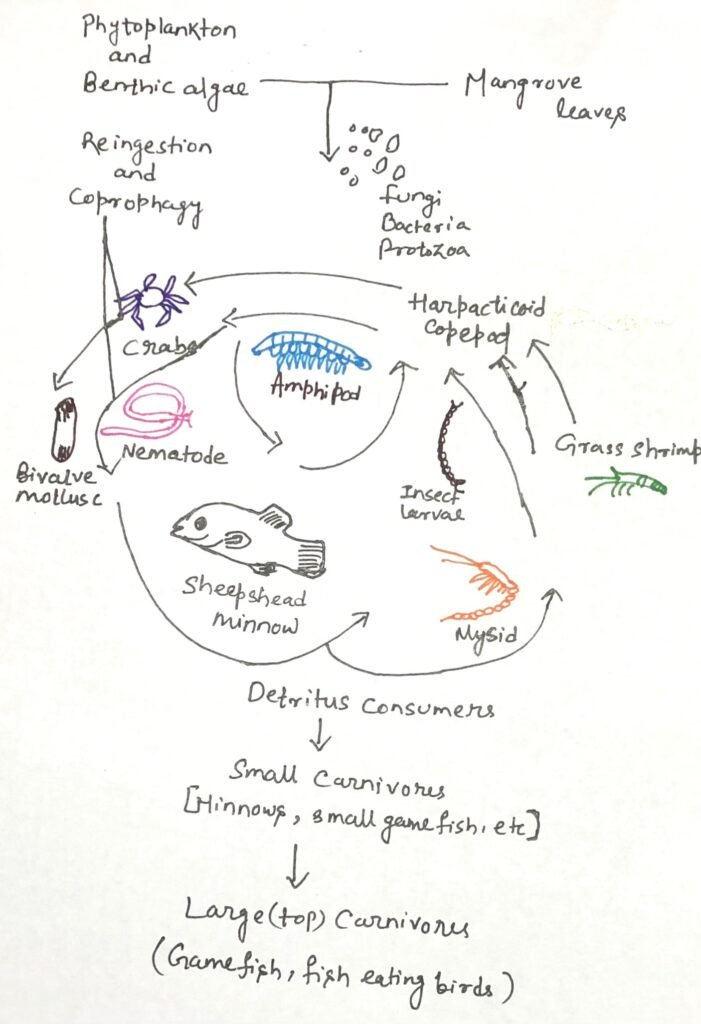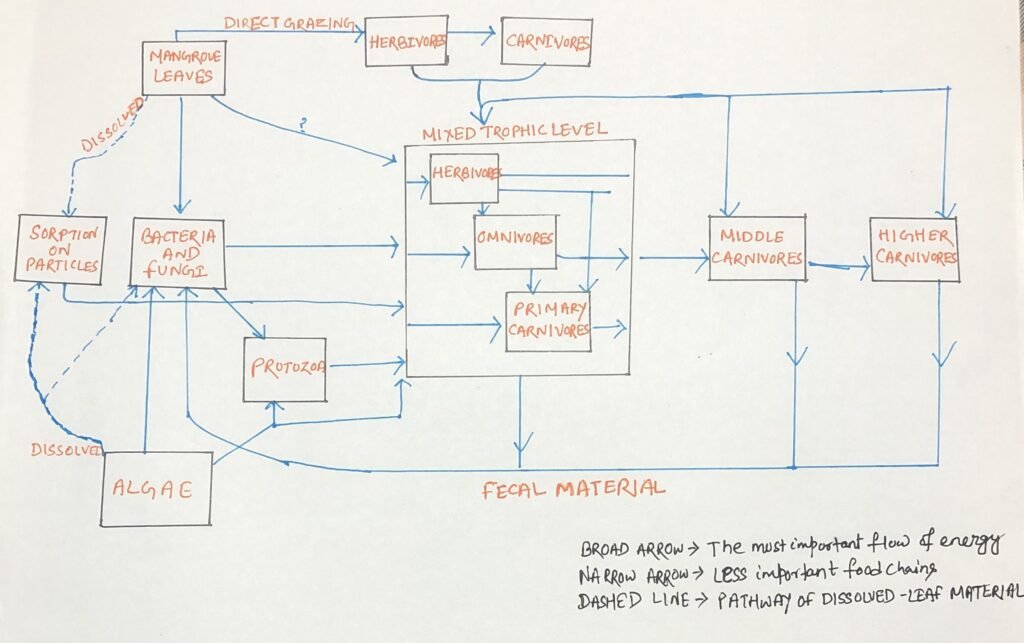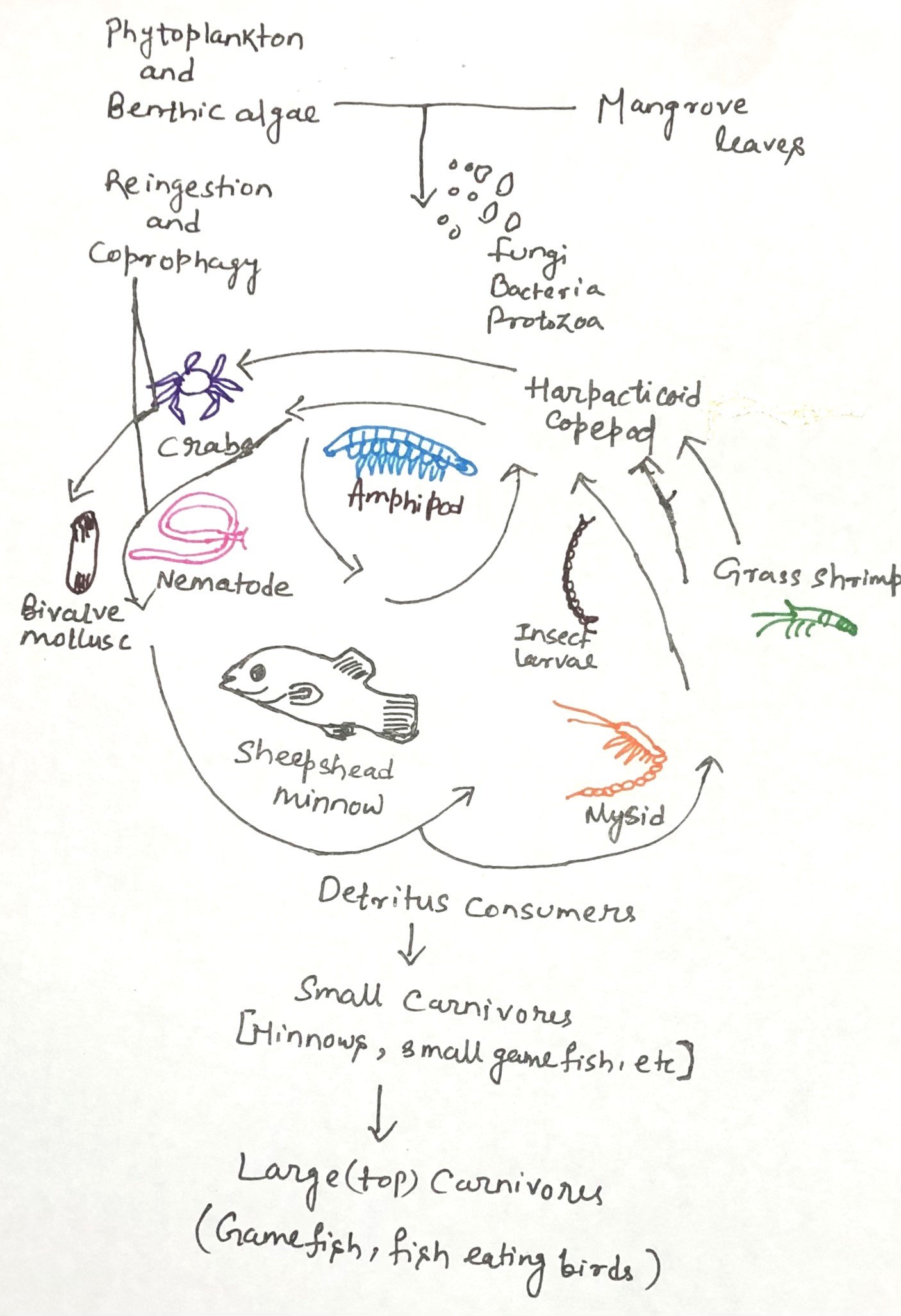In this article, I briefly describe the importance of aquatic microbial ecosystems.
Microbial Interactions in Aquatic Ecosystems
Aquatic ecosystems are home to intricate networks of interactions involving microorganisms and their relationships with larger plant and animal life. Microbes such as algae and protozoa play a crucial role at the base of the aquatic food web. Additionally, many bacterial species carry out essential biochemical processes that facilitate the recycling of nutrients and elements within these environments.
Primary Producers in Marine Ecosystems
Cyanobacteria and eukaryotic algae are the primary producers in the marine ecosystem. They transform radiant energy into chemical energy through the process of photosynthesis. The biological activity of an aquatic ecosystem depends on the rate of primary production performed by photosynthetic organisms. In shallow estuaries, the role of photosynthetic organisms as primary producers is considerably reduced.
Food Web Dynamics in Estuarine Ecosystems
In estuaries, phytoplankton and benthic algae play a limited role in the food supply. Instead, bacteria and fungi break down organic plant matter, converting it into microbial protein that can nourish protozoa (Figure 1).

Many organisms in the estuary are detritus feeders, obtaining energy from decomposing vascular plant material. In deeper estuarine regions, the food web more closely resembles that of marine ecosystems (Figure 2).

Phytoplankton and Ocean Fertility: The Foundation of Marine Life
Phytoplankton, often called the “pasture of the sea,” forms the primary food source for marine animals such as fish, whales, and squids, either directly or through plankton-feeding organisms. The term “fertility of oceans” refers to their ability to produce organic matter through the activity of marine organisms. While terrestrial ecosystems produce about 1 to 10 grams of dry organic matter per square meter per day, deep ocean regions yield only around 0.5 grams. However, the total organic productivity of oceans still surpasses that of land, largely due to phytoplankton.
The growth of phytoplankton depends on factors like sunlight (radiant energy), carbon dioxide, water, inorganic nitrogen, phosphorus, and trace elements. Among these, radiant energy, nitrogen, phosphorus, and trace elements are the most common limiting factors. Microorganisms, particularly bacteria, play a crucial role in recycling these nutrients through mineralization reactions. Thus, microorganisms are essential to sustaining the marine food web.
Among the oceans, the Antarctic Ocean is exceptionally rich in marine life. This is due to the nutrient-rich mixing of waters from the Atlantic, Pacific, and Indian Oceans, driven by the movement of cold bottom currents flowing outward from the Antarctic continental shelf. This circulation brings nutrients to the upper layers, fostering a dense population of phytoplankton.
In this environment, krill (Euphausia superba), a crustacean that feeds on phytoplankton, becomes a vital link in the food chain. Krill supports a wide variety of marine animals, including fish, penguins, seabirds, seals, and whales. It serves as the essential connection between primary producers and the higher trophic levels in the Antarctic ecosystem.
The Role of Krill in Marine Ecosystems
An abundance of nutrients in surface waters leads to a high yield of this phytoplankton and, in turn, becomes a primary food source for a range of marine animals, including fish, penguins, seabirds, seals, and whales. In this ecosystem, krill plays a central role as the key intermediary between microscopic photosynthetic organisms and higher trophic levels.
Pelagic animals depend on the lower-level food sources for survival. Although coastal and estuarine environments are physically less stable than the open ocean, they tend to be more fertile due to the high concentration of nutrients present in these waters.
Microbial Roles in Biogeochemical Transformations
Bacterial communities play a vital role in decomposing organic compounds through dissimilation and mineralization, ultimately converting them into carbon dioxide, water, and various inorganic salts. These organic substrates originate from the metabolic activities of living plants and animals, as well as from the remains of dead organisms.
In aerobic environments, the primary end-products of this microbial breakdown include ammonium, carbon dioxide, sulfate, and phosphate—all of which serve as essential nutrients for plant life, including phytoplankton. However, under anaerobic conditions, the degradation process produces more reduced substances, such as methane, hydrogen, and hydrogen sulfide, along with ammonia, carbon dioxide, and phosphate. These processes are fundamental to nutrient cycling and energy flow within ecosystems.
Biochemical Cycles in the Aquatic Environment
The transformation of elements into organic compounds, followed by their release and conversion back into inorganic forms for reuse, occurs continuously in aquatic ecosystems. Biogeochemical cycles—such as the nitrogen, carbon, sulfur, and phosphorus cycles—operate naturally in these environments.
In each of these cycles, microorganisms, especially bacteria, play a key role by breaking down organic compounds and releasing the elements through a series of biochemical reactions. The resulting inorganic forms of these elements become available again as nutrients for plant growth. During these cycles, complex organic materials are dissimilated by microorganisms. For instance, cellulosic material, which is abundant in both freshwater and marine environments, is degraded by cellulolytic aerobic bacteria. These bacteria break down cellulose into simpler sugars such as cellobiose or even glucose, facilitating further microbial metabolism and nutrient recycling.
Microbial Influence on Marine Sediments and Resource Formation
Large amounts of diatomaceous material settle to the bottom of marine environments. Diatoms, characterized by their silica-based cell walls, vary in wall thickness—ranging from very thin to very thick, depending on the benthic species. Other organisms, such as radiolarians and silicoflagellates, also possess siliceous skeletons, while foraminifera and coccolithophores produce calcareous (calcium carbonate-based) skeletons. These organisms are important members of the plankton community. Upon death, their skeletons gradually sink to the ocean floor, where the undissolved siliceous and calcareous materials accumulate. Over time, vast beds of these materials, sometimes thousands of feet thick, develop in various regions of the ocean.
The deposition and transformation of iron and manganese in marine sediments, along with the formation of sulfur deposits such as those found in the Gulf Coast regions of Texas and Louisiana, are closely linked to microbial activity. Similarly, petroleum deposits originate from the accumulation and burial of organic matter, with microorganisms believed to play a major role in these processes.
Conclusion
Aquatic ecosystems are home to intricate networks of interactions involving microorganisms and their relationships with larger plant and animal life. Cyanobacteria and eukaryotic algae are the primary producers in the marine ecosystem. They transform radiant energy into chemical energy through the process of photosynthesis.
In estuaries, phytoplankton and benthic algae play a limited role in the food supply. Instead, bacteria and fungi break down organic plant matter, converting it into microbial protein that can nourish protozoa. The growth of phytoplankton depends on factors like sunlight (radiant energy), carbon dioxide, water, inorganic nitrogen, phosphorus, and trace elements. Among the oceans, the Antarctic Ocean is exceptionally rich in marine life.
This is due to the nutrient-rich mixing of waters from the Atlantic, Pacific, and Indian Oceans, driven by the movement of cold bottom currents flowing outward from the Antarctic continental shelf. In this environment, krill (Euphausia superba), a crustacean that feeds on phytoplankton, becomes a vital link in the food chain. Krill supports a wide variety of marine animals, including fish, penguins, seabirds, seals, and whales.
Bacterial communities play a vital role in decomposing organic compounds through dissimilation and mineralization, ultimately converting them into carbon dioxide, water, and various inorganic salts. Large amounts of diatomaceous material settle to the bottom of marine environments. Diatoms, characterized by their silica-based cell walls, vary in wall thickness—ranging from very thin to very thick, depending on the benthic species.
You may also like:
- The role of desiccation, filtration, osmotic pressure, and radiation in controlling microorganisms
- Types of associations among soil microorganisms

I, Swagatika Sahu (author of this website), have done my master’s in Biotechnology. I have around fourteen years of experience in writing and believe that writing is a great way to share knowledge. I hope the articles on the website will help users in enhancing their intellect in Biotechnology.




